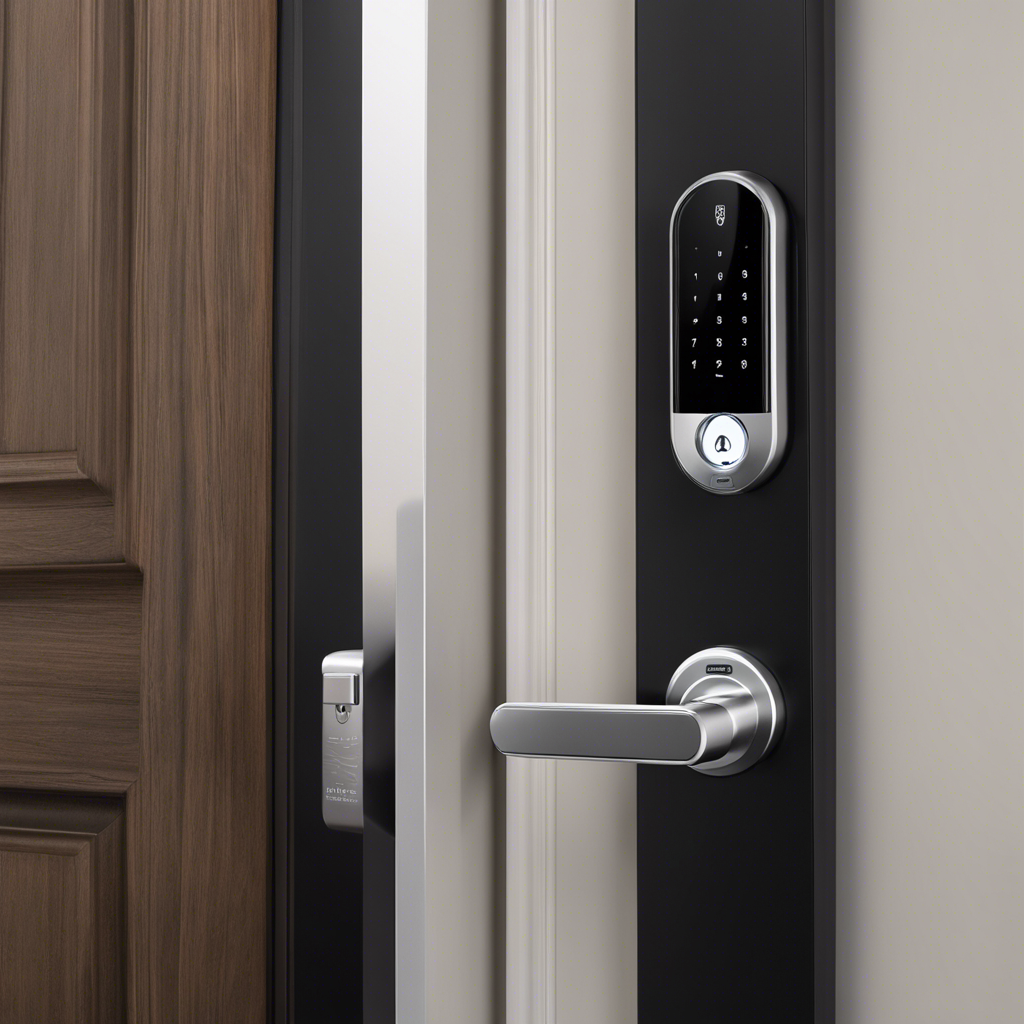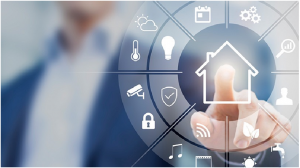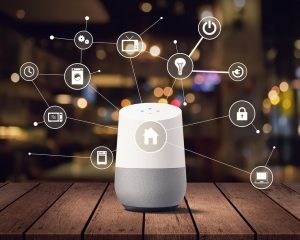As technology continues to advance, so do our options for securing our homes. Gone are the days of relying solely on traditional locks and keys. Now, homeowners have the opportunity to embrace smart locks and access control systems, providing a new level of convenience and security.

But what exactly are smart locks and access control, and how can they enhance the protection of your home? In this discussion, we will explore the benefits of smart locks, the various types available, and the key features to consider. We will also delve into access control systems, their functionality, and how to choose the right solution for your home.
So, if you’re looking to elevate your home’s security, hang tight because we have plenty to explore.
Benefits of Smart Locks
Smart locks offer numerous advantages for enhancing security and convenience in modern access control systems. When comparing smart locks to traditional locks, it becomes evident that smart locks provide a higher level of security and offer the benefits of keyless entry.
One of the primary benefits of smart locks is their ability to eliminate the need for physical keys. With traditional locks, individuals often face the inconvenience of misplacing or forgetting their keys, resulting in being locked out of their own homes or offices. Smart locks, on the other hand, utilize keyless entry systems such as biometric authentication, PIN codes, or smartphone apps, allowing users to unlock doors with ease. This keyless entry feature offers convenience and peace of mind, as there is no longer a need to carry around multiple keys or worry about losing them.
Additionally, smart locks provide enhanced security compared to traditional locks. Traditional locks can be vulnerable to picking, bumping, or unauthorized key duplication. In contrast, smart locks utilize advanced encryption and authentication methods, making it difficult for intruders to gain access. Some smart locks also offer real-time alerts and activity logs, allowing users to monitor and track who enters and exits their premises. This feature provides an extra layer of security and allows for quick response in case of any suspicious activity.
Enhancing Home Security With Access Control
Access control systems can greatly enhance home security by implementing advanced technology and protocols. These systems allow homeowners to have better control over who can enter their property and when. By incorporating access control into their home automation setup, homeowners can enjoy increased security and peace of mind.
Here are two key ways in which access control enhances home security:
- Enhanced Authentication: Access control systems utilize advanced authentication methods to ensure that only authorized individuals can enter the premises. This can include using biometric data such as fingerprints or facial recognition, as well as traditional methods like PIN codes or access cards. By implementing such robust authentication measures, access control systems provide an extra layer of security that traditional locks simply cannot match.
- Remote Monitoring: With access control systems, homeowners can remotely monitor and manage access to their property. This means that even when they are not physically present, they can grant or deny access to visitors or service providers. Whether it’s a delivery person dropping off a package or a pet sitter arriving for a scheduled appointment, homeowners can control who enters their property from the convenience of their smartphone or computer. This level of remote monitoring ensures that homeowners always have a clear overview of who has access to their home.
Types of Smart Locks for Your Home
Are you considering enhancing your home security with the latest advancements in smart technology? One of the key components of a smart home security system is a smart lock. These innovative locks offer convenience, flexibility, and enhanced security features that traditional locks cannot match.
When choosing a smart lock for your home, it’s important to consider smart lock compatibility and the installation process.
Smart lock compatibility refers to the ability of the smart lock to integrate with your existing smart home devices and platforms. Before purchasing a smart lock, check if it is compatible with the smart home hub or app that you are using. This will ensure seamless integration and allow you to control your smart lock along with other connected devices from a single interface.
When it comes to smart lock installation, there are different options available depending on your preference and existing door hardware. Some smart locks are designed to replace the entire deadbolt assembly, while others can be installed on top of the existing lock. The installation process may vary, so it’s important to carefully follow the manufacturer’s instructions or hire a professional locksmith for assistance.
Additionally, some smart locks require a Wi-Fi or Bluetooth connection to function properly, while others rely on alternative methods such as Z-Wave or Zigbee. Consider your home’s internet connectivity and the range of your smart home network when selecting a smart lock.
Key Features to Consider in Smart Locks
When evaluating smart locks for your home security system, it is essential to consider the key features that will enhance convenience and ensure the highest level of protection. Smart lock installation has become increasingly popular as homeowners seek to upgrade their traditional locks with advanced technology. Keyless entry systems, in particular, have gained significant attention due to their convenience and enhanced security features.
Here are some key features to consider when choosing a smart lock:
- Compatibility: Ensure that the smart lock you select is compatible with your existing door and lock system. Some smart locks are designed to work with specific types of doors or lock mechanisms, so it is crucial to check compatibility before making a purchase.
- Connectivity: Look for a smart lock that offers various connectivity options, such as Wi-Fi or Bluetooth. This allows you to control and monitor your lock remotely through a smartphone app or integrate it with your home automation system.
- Authentication Methods: Consider the authentication methods offered by the smart lock. While keyless entry systems typically rely on digital passcodes, some smart locks also offer additional authentication methods, such as fingerprint recognition or voice activation, for added security.
- Integration: If you have other smart devices in your home, consider a smart lock that can integrate with your existing ecosystem. This allows you to create customized automation routines and control multiple devices from a single interface.
- Battery Life: Smart locks are powered by batteries, so it is crucial to choose one with a long-lasting battery life. Look for models that offer low-battery alerts or have backup power options to ensure that your lock remains operational at all times.
Mobile App Integration for Smart Locks
Mobile app integration is a crucial aspect to consider when selecting a smart lock for your home security system. With the advancement in technology, smart locks have become more than just a means of securing your home. They now offer remote access and integration with other smart home devices, making them an essential component of a connected home.
One of the key benefits of mobile app integration is the ability to control your smart lock remotely. Whether you’re at work, on vacation, or simply away from home, you can easily lock or unlock your door using your smartphone. This feature provides convenience and peace of mind, as you no longer have to worry about carrying keys or the possibility of losing them.
Furthermore, mobile app integration allows for seamless integration with other smart home devices. You can integrate your smart lock with your home security system, allowing you to receive notifications and alerts directly on your smartphone. For example, if someone tries to tamper with your lock or if the lock is left unlocked for an extended period, you can receive instant alerts and take appropriate action.
In addition, mobile app integration enables you to create custom access codes for family members, friends, or service providers. You can easily manage and monitor who has access to your home, granting temporary or permanent access as needed. This eliminates the need for physical keys and provides greater control and flexibility over your home security.
How Access Control Systems Work
With mobile app integration providing convenience and peace of mind, it is important to understand how access control systems work to fully utilize the capabilities of smart locks. Access control technology allows users to control who has access to a building or specific areas within it.
Here’s how access control systems work:
- Authentication:
- Users are authenticated through various methods such as PIN codes, key cards, biometric data (fingerprint or facial recognition), or even mobile apps.
- The authentication process verifies the user’s identity before granting access.
- Authorization:
- Once authenticated, the access control system determines the level of access each user has based on predefined permissions.
- Access can be granted or denied based on factors like time of day, day of the week, or user role.
Advantages of access control:
- Enhanced Security:
- Access control systems provide a higher level of security compared to traditional lock and key systems.
- Unauthorized individuals are prevented from gaining entry, reducing the risk of theft, vandalism, or unauthorized access to sensitive information.
- Convenience and Flexibility:
- With access control technology, users can easily manage access rights for individuals or groups.
- Lost or stolen keys are no longer a concern as access can be easily revoked or reissued.
Understanding how access control systems work allows users to maximize the benefits of smart locks and access control technology. By implementing these systems, individuals and organizations can ensure the security of their premises while enjoying the convenience and flexibility they offer.
Choosing the Right Access Control Solution
Selecting the appropriate access control solution is a critical decision that requires careful consideration and evaluation of various factors. With advancements in access control technology, keyless entry systems have become increasingly popular among homeowners and businesses alike. These systems eliminate the need for traditional keys and provide enhanced security and convenience.
When choosing an access control solution, it is important to assess the specific needs of your property. Consider the number of entry points that require control, the level of security required, and the size of your premises. This will help you determine the type and scale of access control system that is most suitable for your needs.
There are several types of access control solutions available, including keypads, card readers, biometric systems, and mobile-based solutions. Keypads require users to enter a PIN code to gain access, while card readers utilize proximity cards or key fobs. Biometric systems use unique physical characteristics, such as fingerprints or facial recognition, to grant access. Mobile-based solutions allow users to unlock doors using their smartphones.
It is also important to consider the scalability and flexibility of the access control solution. As your needs may change over time, it is essential to choose a system that can be easily expanded or modified to accommodate future requirements.
Additionally, ensure that the access control solution is compatible with your existing infrastructure and security systems. Integration with surveillance cameras, alarms, and other security devices can provide a comprehensive security solution for your property.
Installation and Setup of Smart Locks and Access Control
The installation and setup process of smart locks and access control systems is a crucial step in ensuring the effective implementation of enhanced security measures for your property. To help you navigate through this process smoothly, here are some important considerations and troubleshooting tips:
- Installation Challenges:
- Compatibility: Ensure that the smart lock or access control system you choose is compatible with your existing door hardware and connectivity options. Some systems may require additional steps or modifications for proper installation.
- Power source: Determine the power source required for your smart lock. Some models run on batteries, while others may require a wired connection. Make sure you have the necessary power source available and properly installed.
- Troubleshooting Common Issues:
- Connectivity problems: If you encounter connectivity issues, check your Wi-Fi network strength and ensure that the smart lock is within range. It may also help to restart both the lock and the connected device.
- App or software malfunctions: If the smart lock app or software is not functioning correctly, try reinstalling or updating it. Also, ensure that your smartphone or device meets the system requirements.
Tips for Maximizing the Effectiveness of Smart Locks
To ensure optimal performance and security, implementing the following tips will help maximize the effectiveness of smart locks and access control systems.
- Proper smart lock maintenance is crucial in maintaining its functionality and longevity. Regularly clean the lock’s exterior using a soft, non-abrasive cloth to remove dust and debris. Avoid using harsh chemicals or solvents, as they can damage the lock’s finish. Additionally, periodically lubricate the lock’s moving parts with a silicone-based lubricant to prevent friction and ensure smooth operation.
- Troubleshooting smart lock issues is another important aspect of maximizing effectiveness. If you experience connectivity problems, ensure that the lock is within range of the access control system’s hub or bridge. Check for any obstructions or interference from other devices that may be affecting the signal. If necessary, consider relocating the hub or bridge to improve connectivity.
- If the smart lock is not responding to commands, try resetting it by removing and reinserting the batteries or following the manufacturer’s instructions. If the problem persists, consult the user manual or contact customer support for further assistance.
- Regularly updating the smart lock’s firmware is crucial for maintaining security. Manufacturers often release firmware updates to address vulnerabilities and improve functionality. Check for updates regularly and follow the manufacturer’s instructions for installing them.
Frequently Asked Questions
Are Smart Locks Compatible With All Types of Doors and Entryways?
Smart locks are designed to be compatible with a wide range of doors and entryways. However, there may be some unconventional doors or entryways that are not compatible with smart locks. In such cases, there are alternative security measures that can be implemented, such as traditional deadbolts or keyless entry systems.
It is important to assess the specific requirements of your doors and entryways to determine the most suitable security solution.
Can Smart Locks Be Easily Hacked or Tampered With?
Smart locks, like any other technology, are not immune to vulnerabilities and potential hacking. However, it is important to note that the level of security offered by smart locks has significantly improved over the years. Manufacturers have implemented various measures to prevent smart lock hacking, such as encryption protocols and two-factor authentication.
To minimize the risk of hacking, it is crucial for homeowners to regularly update their smart lock’s firmware, use strong passwords, and ensure their home network is secure.
Is It Possible to Integrate Smart Locks With Existing Security Systems?
Integrating smart locks into existing security systems offers several benefits and challenges. By combining the convenience of smart lock technology with the robustness of traditional security systems, homeowners can enhance their overall security.
However, compatibility is a crucial consideration. Ensuring that smart locks are compatible with different types of doors and entryways requires careful planning and adherence to best practices. By consulting with security professionals and following manufacturer guidelines, homeowners can successfully integrate smart locks into their existing security systems.
What Happens if the Power Goes Out? Will I Still Be Able to Access My Home?
In the event of a power outage, it is important to have power outage solutions in place to ensure continued access to your home.
While smart locks may be affected by the power outage, there are alternative access methods that can be implemented. These may include traditional keys or backup power sources for the smart lock system.
It is advisable to have a backup plan in case of power outages to maintain security and access to your home.
Are There Any Limitations or Restrictions on the Number of Users or Access Levels That Can Be Set up With Smart Locks?
When it comes to smart lock systems, there may be limitations on the number of users or access levels that can be set up. However, the scalability of these systems allows for expansion and customization based on the specific needs of the user.
This means that while there may be some initial restrictions, these can often be overcome by adding additional locks or upgrading the system to accommodate a larger number of users or access levels.



